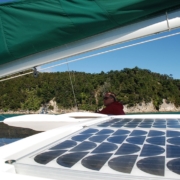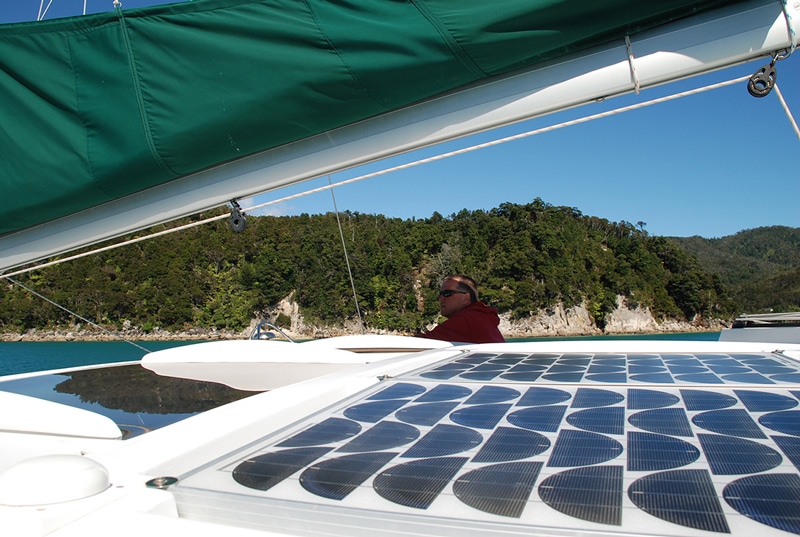Sailboat Solar Power
Solar panels produce DC power and are used to charge the batteries. A relatively small solar panel such as 1 square foot (0.1 m2) can produce about 1½ amps at 12 volts (18 watts) during daylight hours. It is not practical to charge a battery from completely drained to full using a small say 1sq m solar panel. This would take approximately 3 days of good sunlight. However, a solar panel is excellent for keeping the batteries “topped up.”
Boats that spend an extended time away from the marina often are fitted with a large array of solar panels which produce enough electricity to keep up with the daily demand of energy from the electronics.
Solar Panels
Here is how solar power fits into the electrical supply diagram of the boat introduced previously. Solar panels generate DC electricity which dumps straight into the batteries and is then used by whichever DC device is on.
Below, the engine is running. Follow the path of the electrons. In reality, they collect in the batteries and then discharge out of the batteries to any DC device that is turned on as represented by the pink flashing light. When you turn on solar, electrons flow from the panels through the MPPT controller to the batteries and then to the DC devices. An MPPT controller is used to regulate the flow from the solar panels to the batteries so that overcharging does not occur.
Most of the time solar charging is left on. Thus, in reality, they are charging while the engine is on as well.








